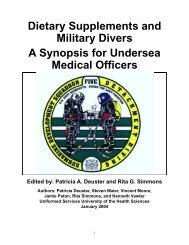Force Health Protection: Nutrition and Exercise Resource Manual
Force Health Protection: Nutrition and Exercise Resource Manual
Force Health Protection: Nutrition and Exercise Resource Manual
You also want an ePaper? Increase the reach of your titles
YUMPU automatically turns print PDFs into web optimized ePapers that Google loves.
Vitamins<br />
Vitamins are classified as fat or water soluble.<br />
◆ Fat Soluble Vitamins are absorbed with dietary fat, can be<br />
stored in the body, <strong>and</strong> are not excreted in the urine. These<br />
include vitamins A, D, E <strong>and</strong> K.<br />
◆ Water Soluble Vitamins, including the B vitamins <strong>and</strong> Vitamin<br />
C, are not stored in the body in appreciable amounts <strong>and</strong> excess<br />
amounts are excreted in the urine each day.<br />
Minerals<br />
Minerals are classified according to their concentrations <strong>and</strong> functions in<br />
the body.<br />
◆ Minerals - examples include: calcium <strong>and</strong> magnesium.<br />
◆ Trace Minerals - are less abundant than minerals; examples<br />
include: zinc, copper <strong>and</strong> iron.<br />
◆ Electrolytes - examples include sodium, potassium <strong>and</strong> chloride.<br />
Recommended Dietary Allowances<br />
The Recommended Dietary Allowances (RDA) shown in Table 2-2 <strong>and</strong><br />
Table 2-3 are the amounts of the vitamins <strong>and</strong> minerals, respectively, that a<br />
healthy person should eat to meet daily requirements. The RDAs are<br />
designed to meet the daily requirements for most healthy people. The RDAs<br />
are undergoing revisions <strong>and</strong> new st<strong>and</strong>ards are gradually becoming<br />
available. These new st<strong>and</strong>ards are called the Dietary Reference Intakes<br />
(DRI). The military has also developed a set of allowances known as the<br />
Military DRIs (MDRIs) to be used for designing military rations.<br />
In most cases your micronutrient needs will be met by eating a variety of<br />
foods. Taking multivitamin <strong>and</strong> mineral supplements is another way to meet<br />
the RDAs for the micronutrients (see Chapter 14, page 105). However, if you<br />
elect to take micronutrient supplements, you are urged to take only the RDA<br />
amount for each micronutrient. Taking more than the RDA of a<br />
micronutrient could lead to toxicity <strong>and</strong> create deficiencies of other<br />
micronutrients.<br />
Micronutrients in the Diet<br />
No one food can provide all of the micronutrients, so you are encouraged<br />
to eat a variety of foods. Also, food preparation can affect the amount of<br />
nutrients that remain in the food, especially when cooking vegetables. To<br />
<strong>Nutrition</strong> <strong>and</strong> <strong>Exercise</strong> <strong>Resource</strong> <strong>Manual</strong> 13




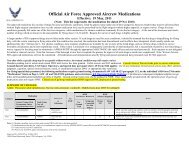

![Body Composition and Military [PDF] - Human Performance ...](https://img.yumpu.com/43269347/1/190x245/body-composition-and-military-pdf-human-performance-.jpg?quality=85)
![Tips for Grocery Shopping [PDF]](https://img.yumpu.com/37447379/1/190x245/tips-for-grocery-shopping-pdf.jpg?quality=85)
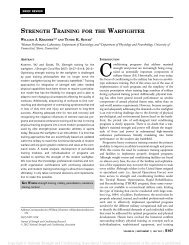
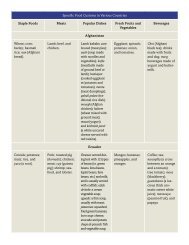
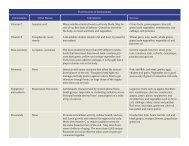
![Synthetic Drugs [PDF] - Human Performance Resource Center](https://img.yumpu.com/37447322/1/190x245/synthetic-drugs-pdf-human-performance-resource-center.jpg?quality=85)
